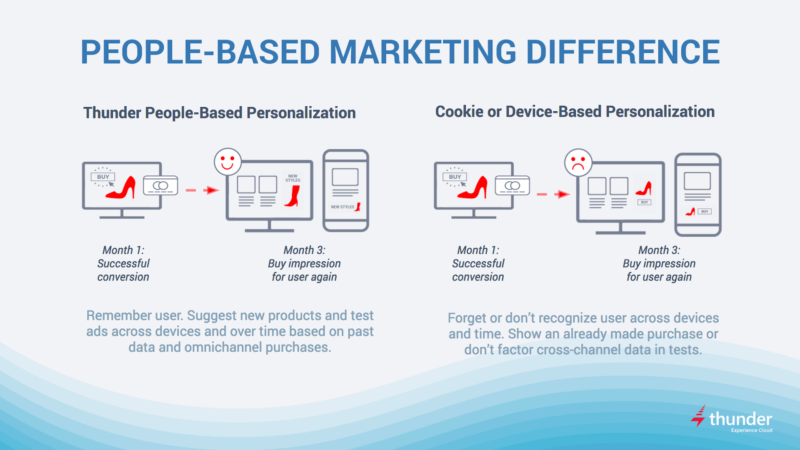Thunder announces first ad platform using LiveRamp’s entire identity graph for personalization, measurement
The creative ad platform/server now describes itself as the only ‘people-based ad server’ covering LiveRamp’s hundreds of millions of profiles.
Thunder Experience Cloud and LiveRamp are announcing a new partnership that offers the first personalization and measurement ad platform for the entire LiveRamp identity graph.
“We are the first people-based ad server,” Thunder CEO Victor Wong told me. His company provides a creative ad management platform and server.
People-based profiles versus cookie-based. LiveRamp’s IdentityLink provides access to people-based profiles, which are built from online and offline (physical stores) data to reflect individual people instead of digital-only targets. Anonymized, they are then tied to cookies or mobile device IDs so that advertisers can target those specific individuals when they show up online.
This contrasts with directing ads at cookies or mobile device IDs, several of which might inadvertently represent the same person. Or cookie/device ID-based ad targeting might provide little accumulated data about a single person’s activity or ad exposure.
The usual LiveRamp scenario. Previously, Wong said, Thunder typically employed shared IP addresses to determine if a tablet, smartphone and laptop were owned by at least the same group of people. Now, it’s determining through LiveRamp if they are owned by the same person. This partnership, he said, moves his company from household-based to individual person-based data.
The usual LiveRamp scenario, he said, is that a brand provides CRM data about its own customers, which are then matched via persistent identifiers to LiveRamp’s profiles so that the brand can target those same customers online. Sometimes, a brand might expand into similar profiles via lookalike attributes.
How person-based advertising differs. Thunder, he said, rebuilt its entire platform over the last year so it can utilize the entire LiveRamp identity graph, about 300 million profiles worldwide. This is the first time the LiveRamp data has been used for ad personalization and measurement for users beyond a brand’s own customers, Wong said.
By personalization, he means tailoring the ad message to the person, such as a coupon to a new customer or avoiding an ad about sneakers to another customer because that user recently bought a pair of sneakers. LiveRamp specializes in mapping offline data like sales in physical stores to online profiles.
By measurement, Wong means attribution to give ad exposure credit for sales or other actions, but also A/B testing that can determine which had better online or offline results by tracking an individual user’s activity.
Why you should care. The idea behind person-based profiles is that real-world as well as online data accumulates into a person’s profile, representing an actual consumer. This contrasts with the many digital-only profiles that could exist for a single person, each a set of possibly overlapping — but incomplete — web behaviors, or demographics, or locations.
As the General Data Protection Regulation (GDPR) and the upcoming California privacy law take hold, individuals will be looking for more control over their entire profile, so individual profiles can help with that kind of privacy management. And personalization — the goal for many marketers — is really only feasible when you are addressing a complete picture of a single customer.
Contributing authors are invited to create content for MarTech and are chosen for their expertise and contribution to the martech community. Our contributors work under the oversight of the editorial staff and contributions are checked for quality and relevance to our readers. MarTech is owned by Semrush. Contributor was not asked to make any direct or indirect mentions of Semrush. The opinions they express are their own.
Related stories
